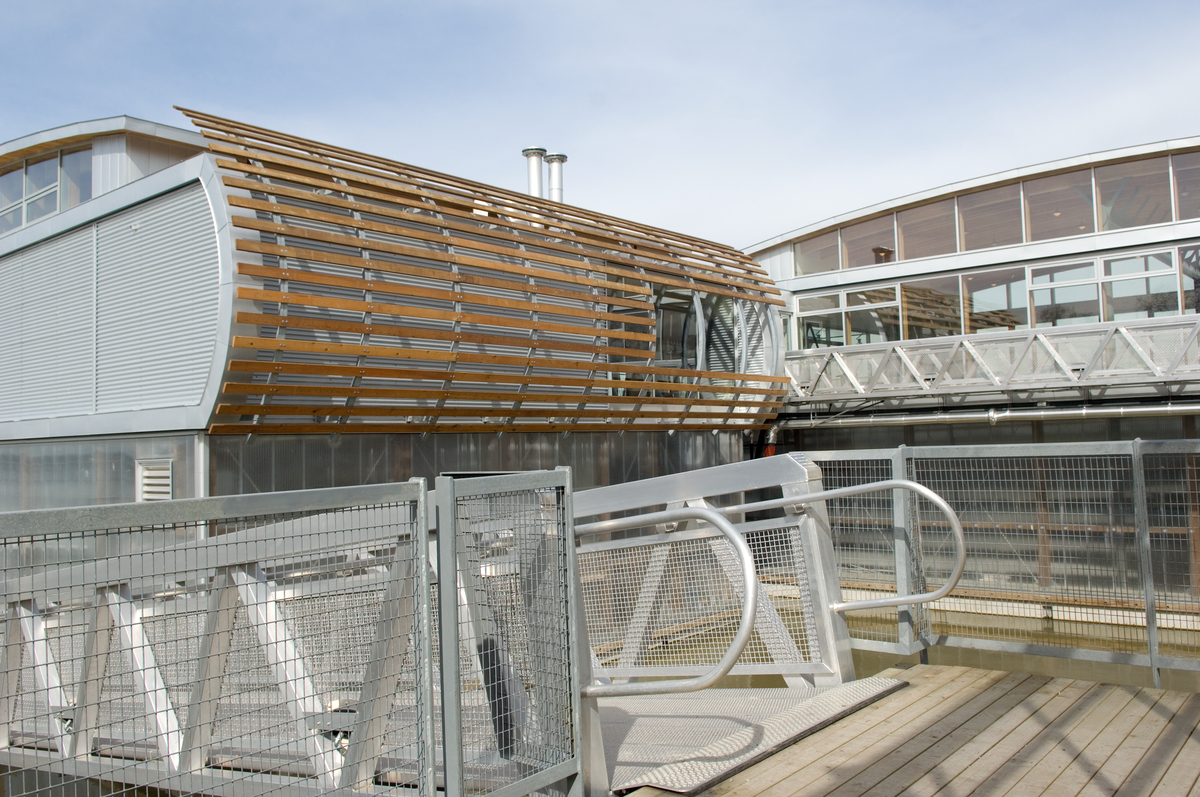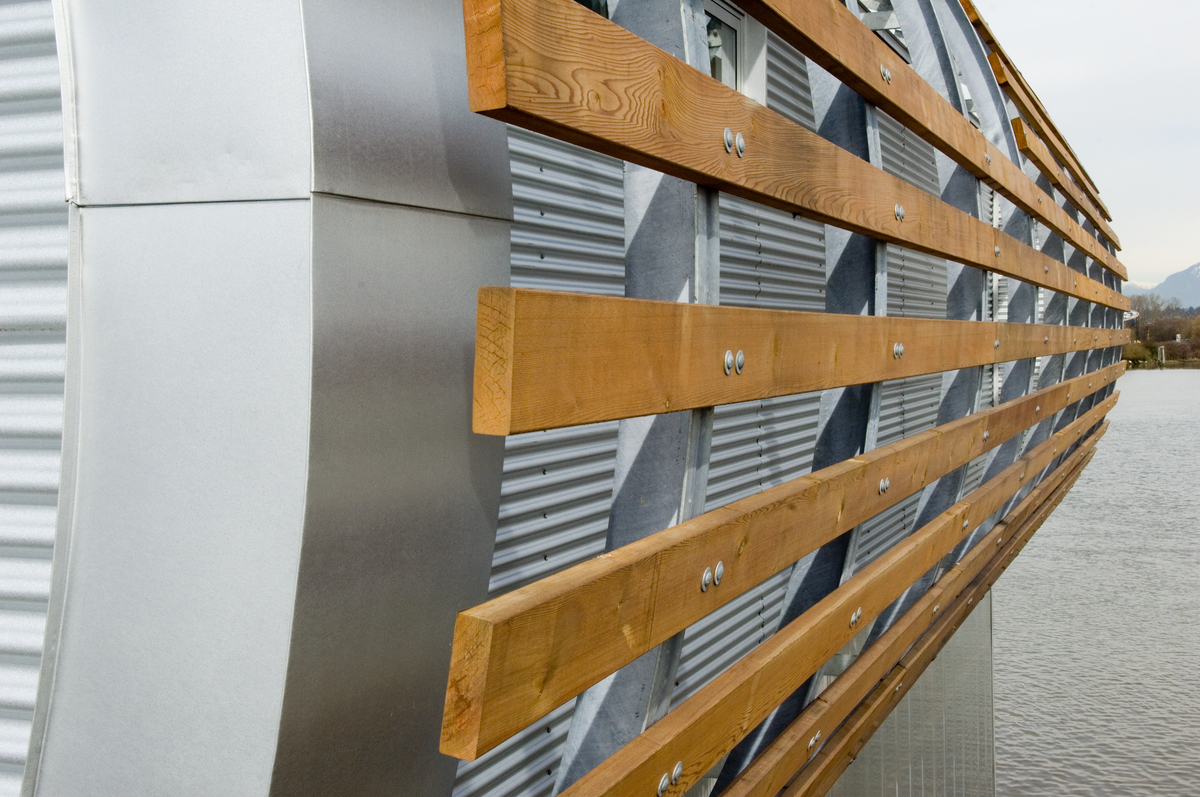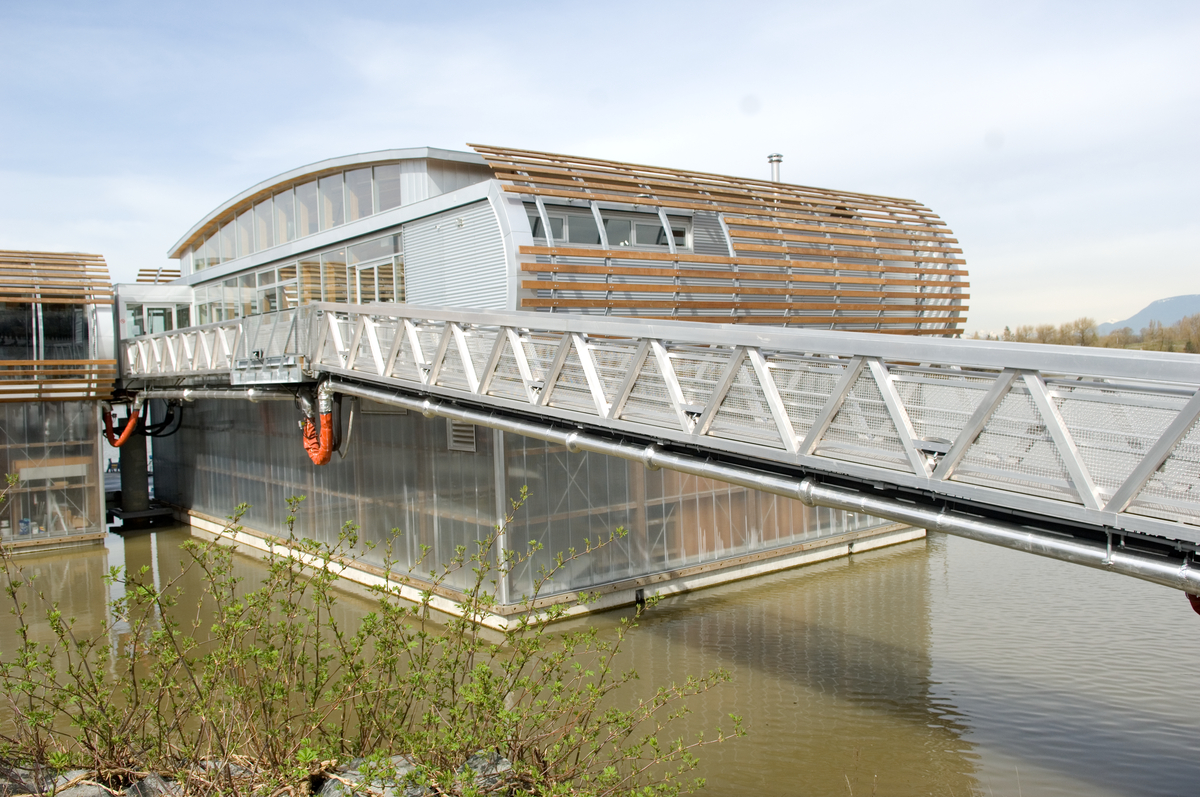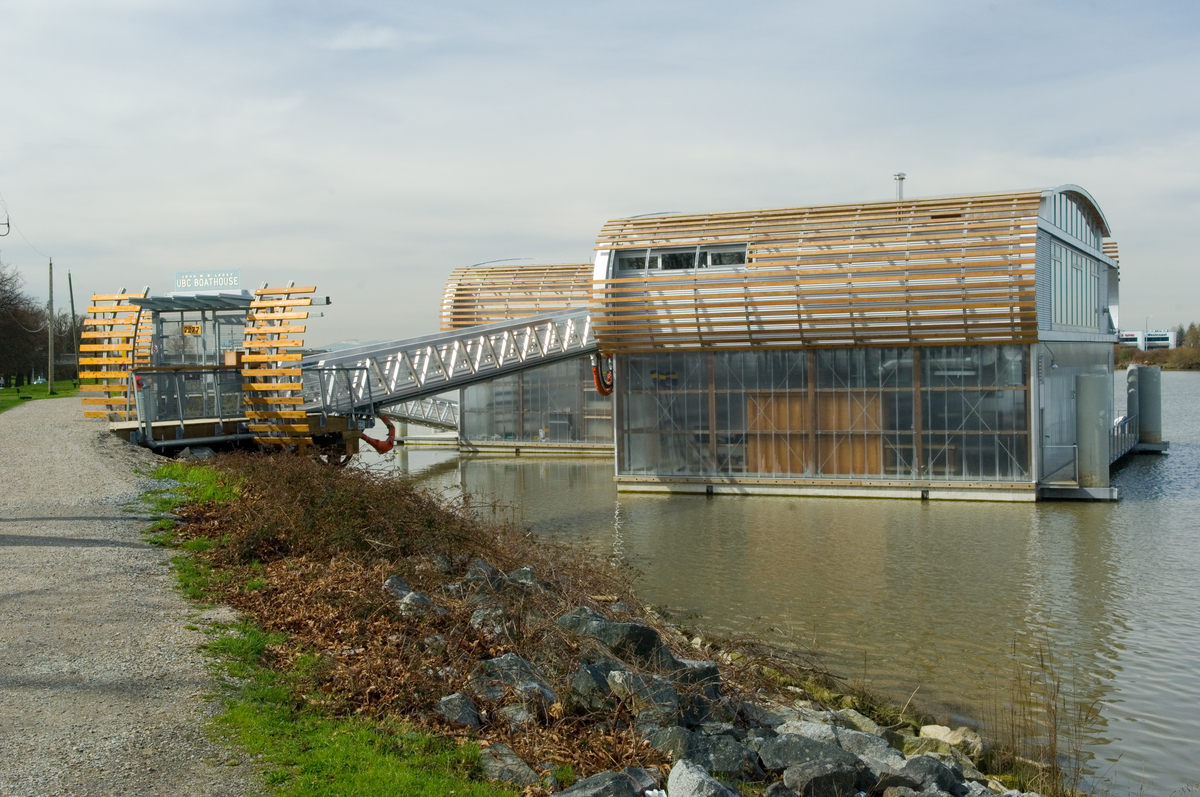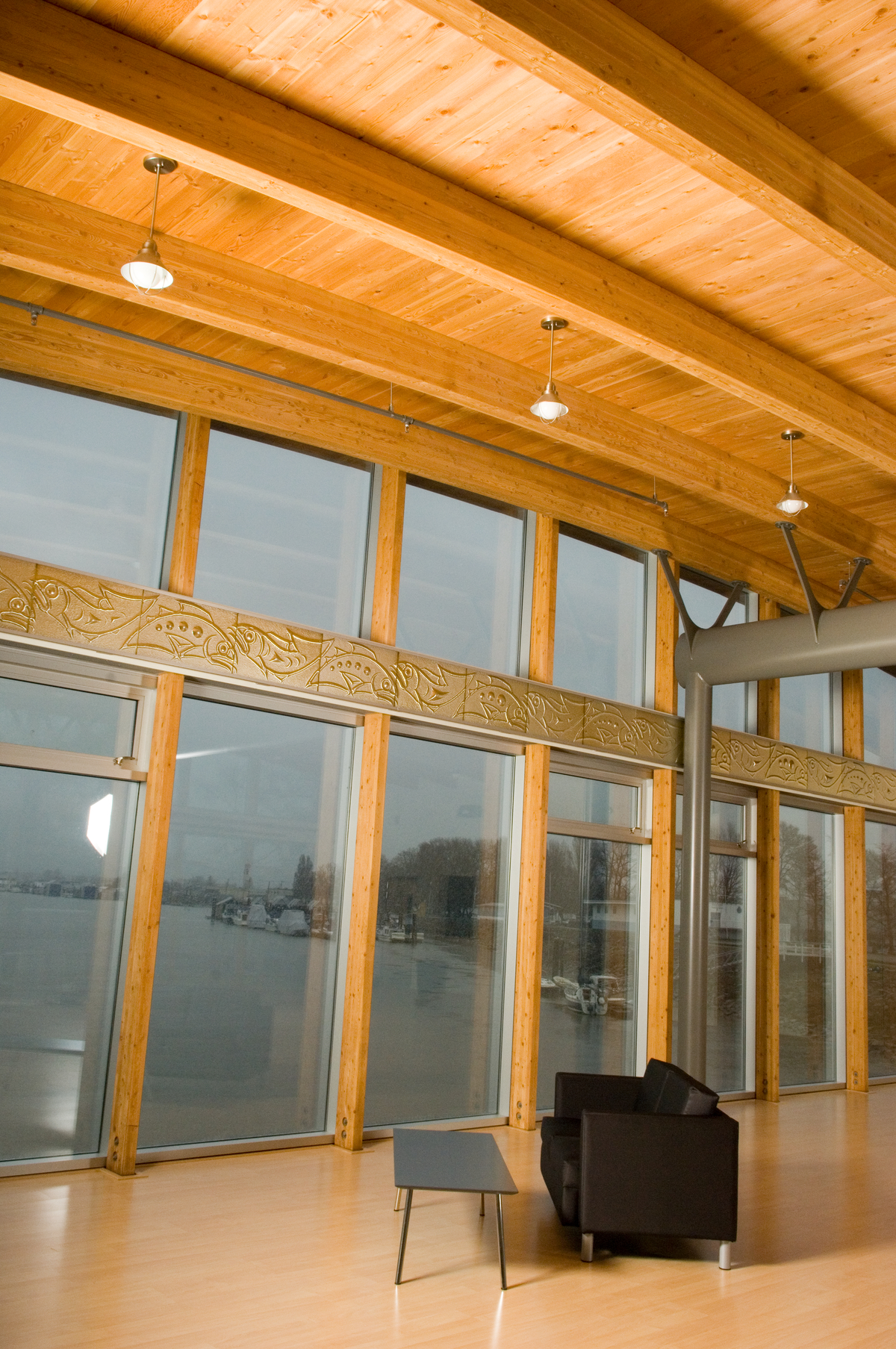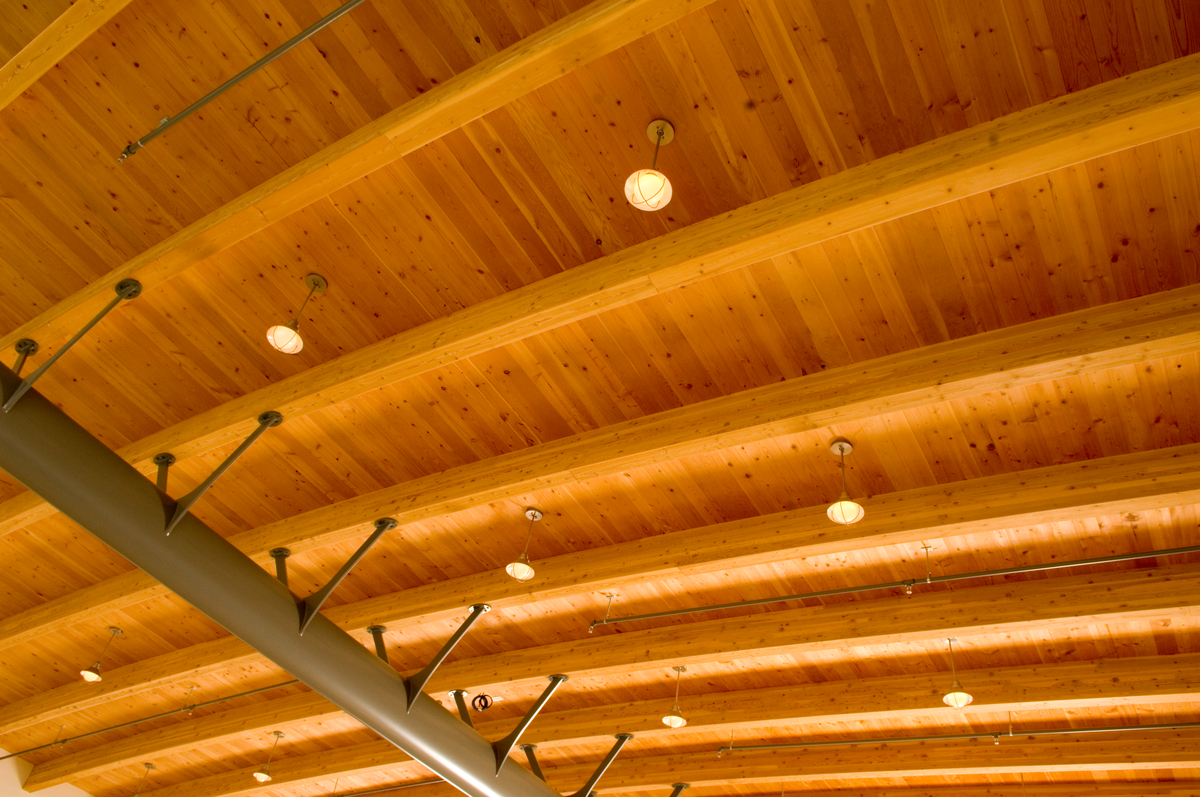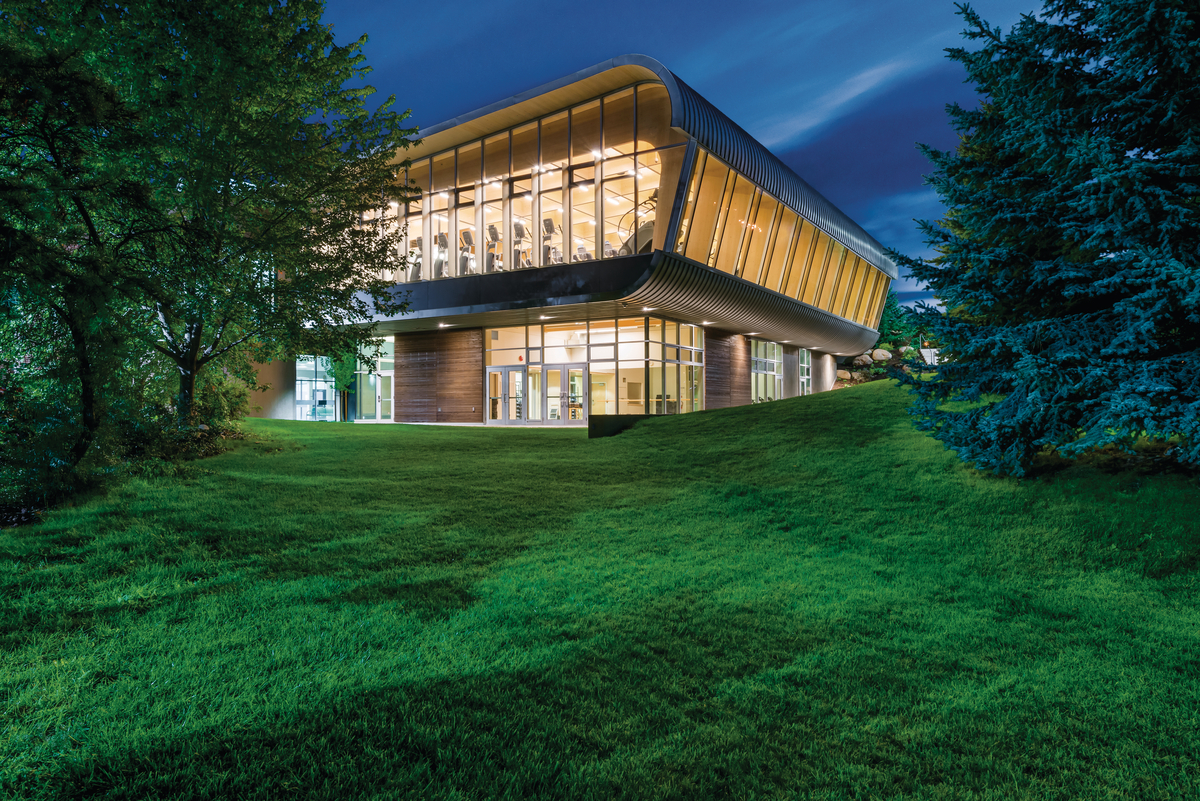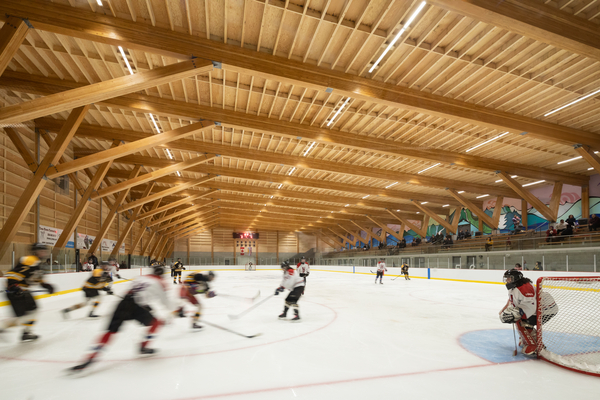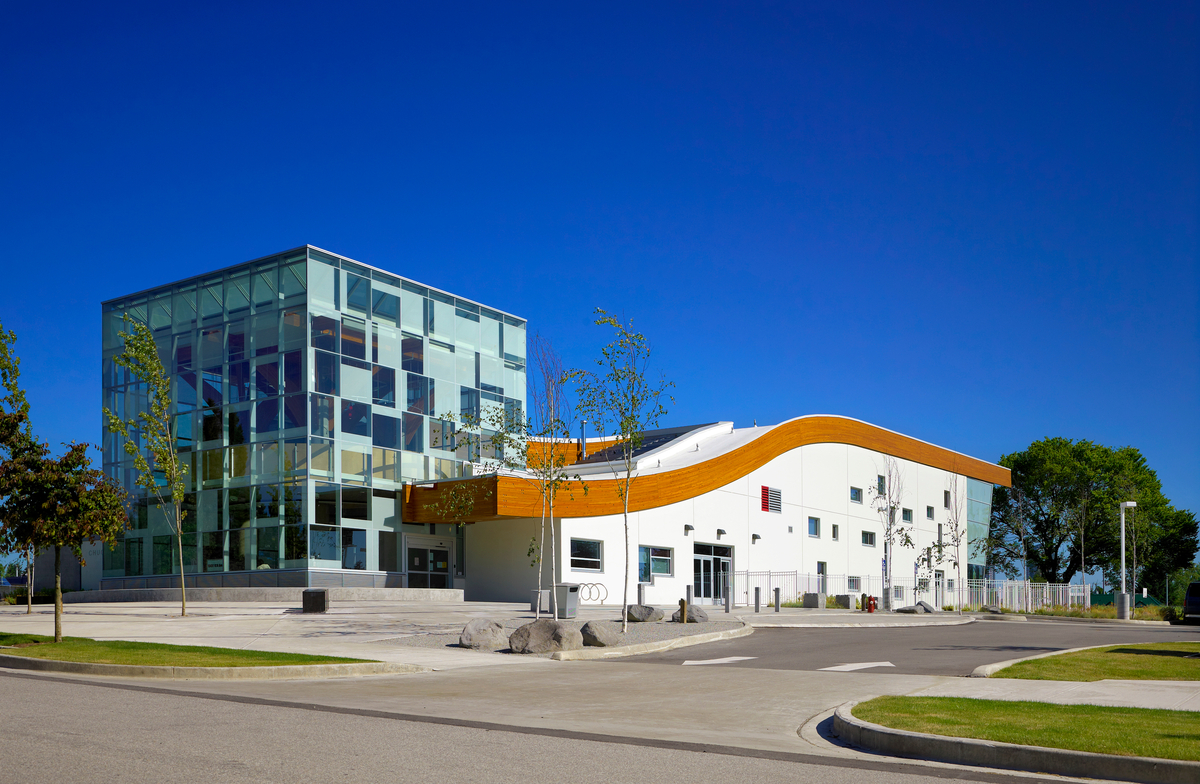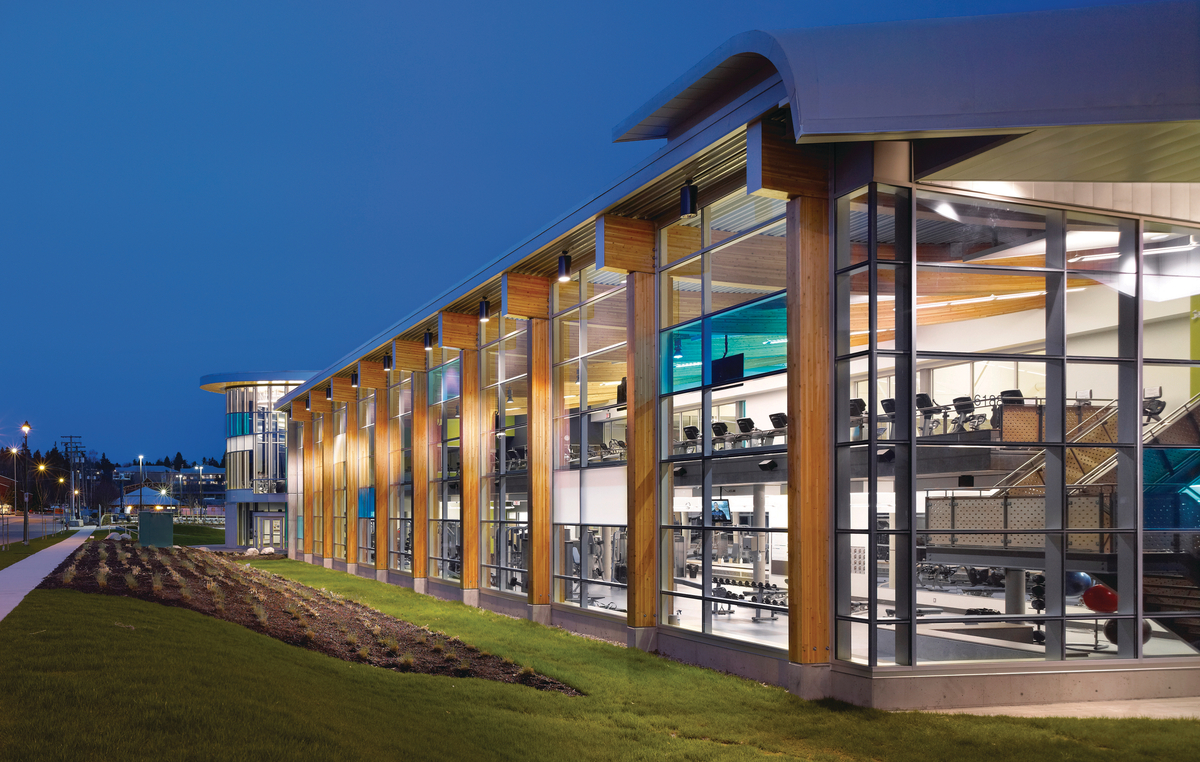A wood-enhanced design that alludes to rowing
The visually stunning boathouse on the banks of the Fraser River in Richmond is a floating wood superstructure. It was prefabricated and floated into place to service the needs of competitive and recreational rowing teams and community rowing and paddling programs. The floating structure, which includes four boat bays, brings boat storage down to river level, making launching of boats easier and more efficient.
- A heavy timber superstructure is constructed on top of concrete floats with styrofoam cavities.
- The lower level utilizes a post-and-beam construction using solid Douglas-fir posts and parallel strand lumber (PSL) beams.
- The combination of steel and glue-laminated timber (glulam) makes for an efficient lightweight solution that also aesthetically captures the quality of rowing.
Architecture maximizes views and captures the ever-changing reflections of the river
The John M.S. Lecky UBC Boathouse is located in Richmond, British Columbia on the middle arm of the tidal estuary of the Fraser River, accessed through a public park on the bordering dike. The floating building provides training facilities for the University of British Columbia Thunderbirds and St. George’s School rowing teams. It also provides a venue for weddings, community programs, recreational rowing and dragon boating.
The building is divided into two modules that are linked by a flexible bridge and floating docks. It is moored by steel anchor pilings and accessed by aluminum gangways. The heavy timber superstructure is constructed on top of concrete floats, similar to ‘raft’ foundations. The architecture emphasizes transparency—maximizing views in and out of the public spaces, as well as luminosity—capturing the ever-changing reflections of light off the river.
Prefabricated and floated into place
The decision to prefabricate the structure and float it into place was key to realizing the goal of making a building that not only responded to its site in a dynamic way but was also energy efficient, with minimal impact on the environment. The heavy timber frame was ideally suited to this purpose, being made of locally sourced, durable material with low embodied energy.
The development of the structural module for the building was based on the most efficient layout for the storage of rowing shells (boats), oars and other equipment. Because the structure is at water level, the shells are easily moved from storage to water.
The combination of steel and glue-laminated timber (glulam) makes for an efficient lightweight solution that also aesthetically captures the quality of rowing. The lower level is framed with a primary post-and-beam structure of solid Douglas-fir posts and parallel strand lumber (PSL) beams. On the second storey, slim glulam posts impose a rhythm on the aluminum-framed window walls to the north and south of the event hall. The roof structure comprises curved horizontal glulam purlins and elliptical steel beams. The roof consists of exposed 2×4 Douglas-fir lumber with plywood sheathing.
Sustainability through use of wood a key goal
The choice to prefabricate the locally sourced, heavy timber frame structure and float it into place enabled designers to construct a boathouse of low embodied energy. A life cycle analysis informed their decisions, including reliance on natural light and ventilation, as well as protective western red cedar slat screens mounted on curved steel brackets on the southeast and southwest windows, providing shading from low-angle sunlight. The windows are operable—thereby omitting the need for air conditioning. The screens also soften the silhouette, framing views from the outdoor decks.
“The structure responds to the needs of the building—simple post and beam on the lower-level storage areas, and a more elegant, exposed roof structure in the public areas above. The combination of steel and glulam makes for an efficient lightweight solution that also captures some of the dynamic quality of the sport of rowing.”
Paul Fast, Partner, Fast + Epp
